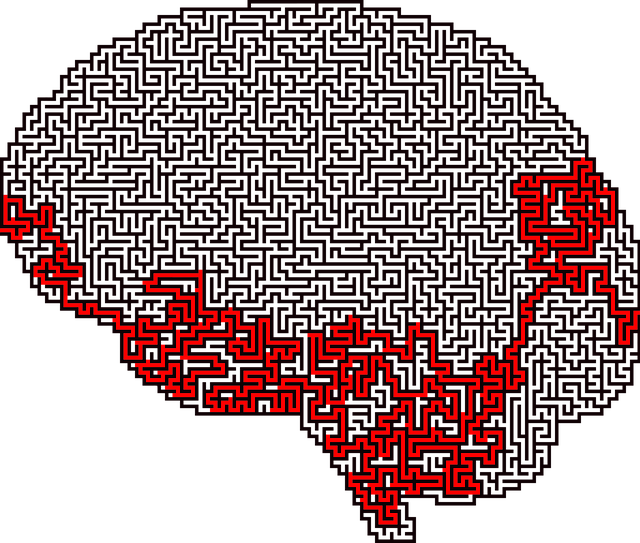Lone Tree Adjustment Disorder (LTAD) is a mental health condition triggered by significant life changes or trauma, manifesting as severe depression, anxiety, isolation, chronic fatigue, and sleep disturbances. Diagnosis requires a comprehensive evaluation by mental health professionals using various assessment tools. Effective LTAD therapy involves building resilience to cope with stressors, while risk assessment is crucial for patient safety. Treatment options include cognitive-behavioral therapy (CBT), dialectical behavior therapy (DBT), mindfulness meditation, exercise, and trauma support services for complex cases. Therapy sessions focus on processing emotions, challenging negative thoughts, developing coping skills, and fostering resilience, empowering individuals to maintain mental wellness through coaching programs and public awareness campaigns. A robust support network, including understanding friends, family, and groups, is vital for long-term recovery, with healthcare providers adopting compassion cultivation practices to prevent burnout and offer consistent support throughout the healing process.
Mental illness diagnoses can be complex, especially with conditions like Lone Tree Adjustment Disorder (LTAD). This article guides you through understanding LTAD’s unique symptoms and diagnosis process. We explore various treatment options, emphasizing the transformative power of therapy in managing adjustment disorders. Additionally, we delve into building supportive networks crucial for long-term recovery, offering insights into navigating this journey towards healing. Discover how effective strategies can help manage LTAD and enhance overall well-being.
- Understanding Lone Tree Adjustment Disorder: Symptoms and Diagnosis
- Navigating Treatment Options for Effective Healing
- The Role of Therapy in Overcoming Adjustment Disorders
- Building a Supportive Network for Long-Term Recovery
Understanding Lone Tree Adjustment Disorder: Symptoms and Diagnosis

Lone Tree Adjustment Disorder (LTAD) is a mental health condition that arises from an individual’s struggle to adapt to significant changes or traumatic events in their life, such as relocating to a new environment, experiencing major losses, or facing abrupt lifestyle shifts. Understanding LTAD involves recognizing its unique set of symptoms, which can include feelings of severe depression, anxiety, and isolation, along with physical manifestations like chronic fatigue and sleep disturbances.
Diagnosis for LTAD typically involves a comprehensive evaluation by mental health professionals who employ tools such as detailed psychological assessments, clinical interviews, and sometimes, standardized questionnaires to gauge the extent of an individual’s adjustment difficulties. This process not only focuses on identifying symptoms but also assessing the impact of these symptoms on daily functioning and overall quality of life. Effective LTAD therapy often incorporates resilience-building strategies, tailored to help individuals cope with stressors and navigate transitions more effectively. Additionally, risk assessment and management planning for mental health professionals are crucial components in providing adequate care, ensuring that both patients and practitioners are equipped to handle potential challenges associated with this complex disorder.
Navigating Treatment Options for Effective Healing

Navigating treatment options is a crucial step towards effective healing for individuals dealing with mental illness. It’s essential to understand that there isn’t a one-size-fits-all approach when it comes to therapy. For those experiencing symptoms akin to Lone Tree Adjustment Disorder, a comprehensive evaluation by a qualified mental health professional becomes the first cornerstone. This assessment helps pinpoint the specific disorder and guides the selection of tailored treatment methods.
Following this initial step, exploring various therapeutic modalities can be empowering. Different forms of therapy like cognitive-behavioral therapy (CBT) or dialectical behavior therapy (DBT) have proven effective in addressing adjustment disorders and promoting resilience. Incorporating self-care practices alongside professional support is another vital aspect of recovery. Stress reduction methods, such as mindfulness meditation, regular exercise, and maintaining a consistent sleep schedule, can significantly enhance the benefits of therapy. Trauma support services also play a crucial role for individuals with complex histories, offering specialized care to address underlying trauma and foster healing.
The Role of Therapy in Overcoming Adjustment Disorders

Therapy plays a pivotal role in helping individuals overcome adjustment disorders, such as Lone Tree Adjustment Disorder. Through structured and supportive conversations with a mental health professional, individuals can explore the underlying causes of their distress and develop effective coping mechanisms. Therapy provides a safe space to process emotions, challenge negative thought patterns, and build resilience. Techniques like cognitive-behavioral therapy (CBT) have proven successful in treating adjustment disorders by teaching clients practical skills to manage stress, anxiety, and depression associated with significant life changes or transitions.
In addition to direct therapy, Mental Wellness Coaching Programs Development can complement traditional treatment approaches. Coaches work collaboratively with individuals to enhance self-awareness, set personal goals, and create actionable plans for maintaining mental wellness. This proactive approach to burnout prevention empowers people to navigate life’s challenges more effectively, thereby reducing the risk of developing adjustment disorders. Public Awareness Campaigns Development is also crucial in destigmatizing mental health issues and encouraging early intervention, which can significantly improve outcomes.
Building a Supportive Network for Long-Term Recovery

Building a strong support network is an integral part of navigating mental illness and fostering long-term recovery. This includes surrounding oneself with understanding friends, family, or support groups who can provide emotional backing and encouragement throughout the journey. For individuals dealing with specific disorders like Lone Tree Adjustment Disorder, therapy sessions become a cornerstone of their recovery. Here, coping skills development is crucial; therapists teach individuals strategies to manage symptoms, enhance resilience, and improve overall well-being.
Furthermore, healthcare providers play a vital role in burnout prevention by incorporating compassion cultivation practices into their routines. This not only benefits the professionals but also ensures they can offer the best care to their patients. By fostering empathy and self-care, providers can maintain a compassionate mindset, enabling them to provide consistent support throughout the recovery process.
In navigating the complexities of Lone Tree Adjustment Disorder, understanding symptoms, diagnosis, and available treatment options is paramount. This article has explored these aspects, emphasizing the crucial role of therapy in overcoming adjustment disorders. By combining professional support with a robust, supportive network, individuals can achieve long-term recovery and lead fulfilling lives. Remember that seeking help is a sign of strength, and there are effective paths to healing.














